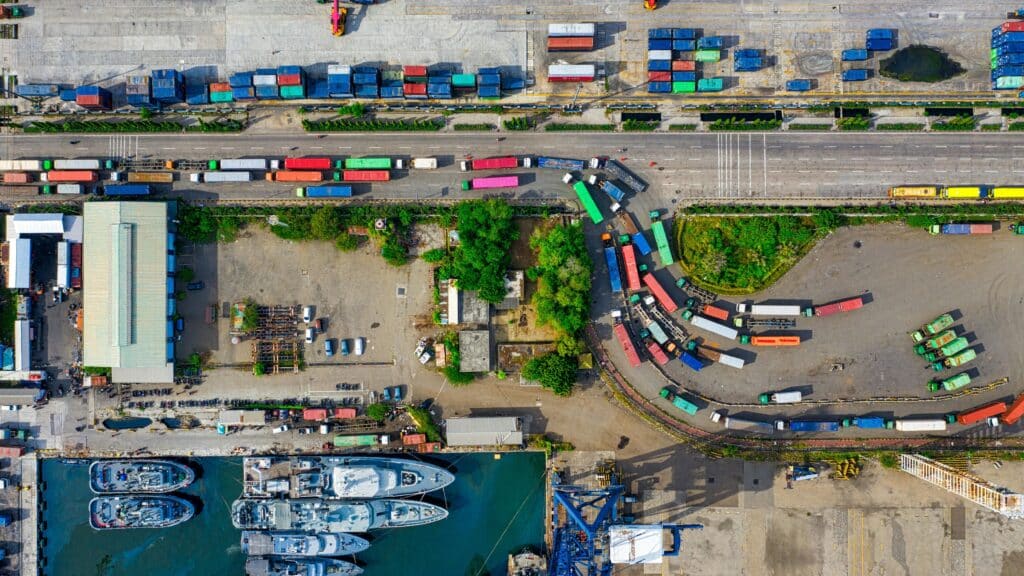Szonja
Contents
Sustainable logistics practices are rapidly becoming a cornerstone of the modern supply chain. As the logistics sector grows, so does its environmental impact, prompting businesses to seek solutions that balance profitability and eco-consciousness.
In this blog, we delve into the significance of sustainable logistics practices, their environmental implications, and strategies that can make logistics greener and more efficient.
What Is Sustainability in Logistics?
Sustainable logistics practices refer to minimizing the environmental impact of transportation, warehousing, and supply chain operations while maintaining efficiency and profitability.
Key practices include using renewable energy sources like solar panels to power warehouses and optimizing delivery routes with technologies like GPS and AI to reduce fuel consumption. Recycling materials and adopting reverse logistics for responsible product returns are also central to reducing waste. Transitioning to green technologies, such as electric and hydrogen-powered vehicles, is driving significant reductions in emissions.
Why Is Sustainability Important in the Logistics Sector?
The logistics industry plays a significant role in environmental challenges, including greenhouse gas emissions and resource depletion. Adopting sustainability is both a practical necessity and an opportunity for companies to reduce fossil fuel reliance and meet regulatory requirements.
By improving efficiency and embracing innovation, logistics businesses not only enhance their profitability but also gain a competitive edge. This commitment to sustainability fosters trust and loyalty among eco-conscious clients and partners.
Environmental Impact of Logistics
Logistics activities, particularly transportation and warehousing, have a profound impact on the environment. Transportation alone accounts for about 24% of global carbon emissions, with freight and last-mile deliveries being particularly harmful.
These operations contribute significantly to air pollution and resource depletion, especially through excessive fuel consumption and packaging waste. The carbon footprint of the industry spans road, air, sea, and rail transport, along with energy usage in warehouses. Urban inefficiencies, such as empty delivery miles, worsen the problem.
Addressing these issues requires a holistic approach, including the adoption of electric or hybrid vehicles, the use of alternative fuels like biofuels and hydrogen, and shipment consolidation to reduce trips and fuel usage.

Best Practices and Strategies for Sustainability
Green warehousing is a key strategy in sustainable logistics. These facilities are designed to be environmentally friendly, incorporating energy-efficient technologies, solar panels for power generation, LED lighting, and improved insulation to reduce energy consumption.
Optimizing routes for sustainability is another critical practice. Using GPS and AI systems, logistics companies can identify the shortest and most fuel-efficient paths for deliveries. Planning deliveries to minimize empty miles by coordinating return trips and prioritizing rail or sea transport for long distances over air or road transport further enhances efficiency and reduces emissions.
Economic Factors of Sustainable Logistics
While adopting sustainable logistics practices often requires significant initial investments, the long-term benefits far outweigh the costs. For instance, fuel savings from efficient vehicles and route planning, as well as lower energy bills in green warehouses, contribute to overall cost reductions. Streamlined operations lead to less waste, and companies that prioritize sustainable logistics practices often attract more clients and investors.
These benefits, combined with enhanced brand reputation and customer loyalty, make sustainable logistics a sound economic strategy. Compliance with environmental regulations also ensures that businesses avoid penalties and stay competitive in the market.
Consumer Trends and Demand
Consumer demand is increasingly driving the push for sustainable logistics. Studies indicate that many consumers value environmentally friendly shipping options and are even willing to pay a premium for carbon-neutral or green delivery services. The rise of e-commerce has intensified the demand for fast delivery, presenting both challenges and opportunities for sustainable logistics.
Urban delivery hubs, which reduce travel distances, and the adoption of electric vans for last-mile deliveries are examples of how logistics companies are innovating to meet these demands. Carbon-neutral delivery, which offsets emissions through investments in renewable energy projects, tree planting, or carbon credits, is gaining popularity as a sustainable solution.
Alternative Fuels and Energy Sources
The use of alternative fuels is transforming the logistics sector.
- Biofuels, derived from organic materials, significantly reduce emissions compared to traditional fuels.
- Compressed Natural Gas (CNG) is another cleaner option, producing fewer greenhouse gases than diesel.
- Hydrogen-powered vehicles are emerging as a zero-emission alternative, although the infrastructure for widespread adoption is still developing.
- Renewable energy sources like solar panels and wind turbines power warehouses and logistics facilities, supporting charging stations for electric vehicles and further reducing the industry’s carbon footprint.
- Hydrogen fuel cells, which generate electricity through a chemical reaction and emit only water vapor, are particularly promising for long-haul freight due to their extended range and quick refueling capabilities.

Future of Sustainable Logistics
The future of sustainability in logistics is shaped by several emerging trends. Circular supply chains, which focus on recycling and reuse, are becoming more prevalent. Autonomous electric delivery vehicles are also on the rise, promising to enhance efficiency while reducing emissions. The adoption of AI and IoT technologies is revolutionizing logistics by optimizing supply chain operations, predicting demand for better inventory management, and enabling smart route planning to minimize emissions.
However, challenges remain, such as balancing the costs of sustainability initiatives with operational needs, developing infrastructure for alternative fuels like hydrogen, and adapting to stricter environmental regulations. Overcoming these obstacles will require collaboration and innovation across the industry.
The Contribution of Portex
Portex is committed to advancing sustainable logistics practices through a combination of innovative strategies and everyday practices.
- The primary focus right now is on route optimization, where advanced technologies like GPS and AI are employed to create the most efficient delivery plans, reducing fuel consumption and emissions.
- Additionally, Portex operates warehouses equipped with solar panels and energy-efficient systems to significantly cut down on energy usage.
- The company also operates in a paperless office environment, which reduces waste and promotes digital solutions for greater efficiency.
These initiatives not only align with Portex’s sustainability goals but also serve as a benchmark for eco-conscious practices in the logistics sector.
Conclusion
Sustainability in logistics is more than a trend; it’s a necessity for the future of supply chains. By adopting green technologies, optimizing operations, and addressing environmental concerns, logistics companies can achieve a balance between profitability and eco-consciousness.
Embracing sustainability not only benefits the planet but also paves the way for long-term success in a competitive market.
If you would like to work with a logistics company that is committed to sustainability, contact us today and request a quote!
